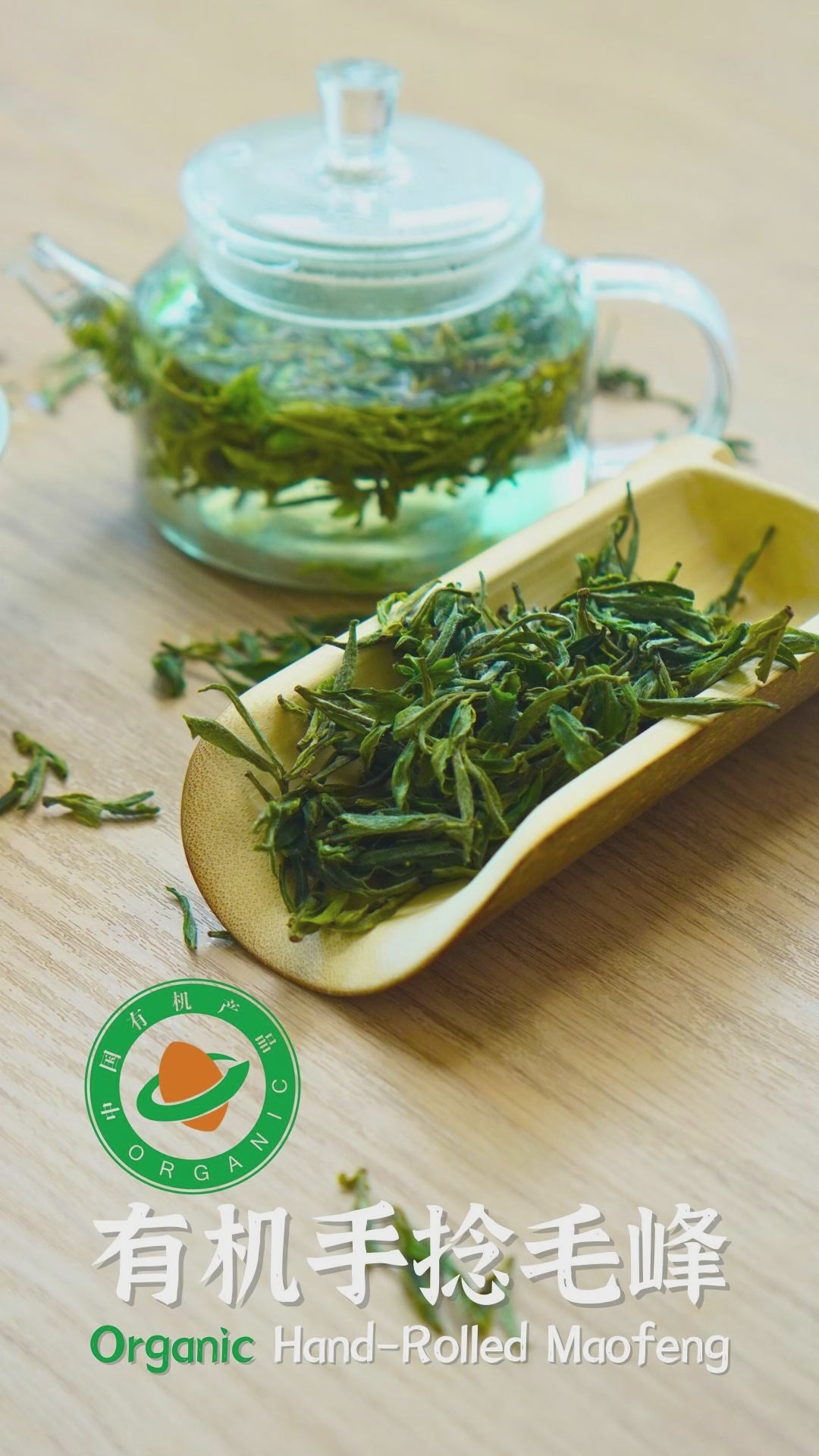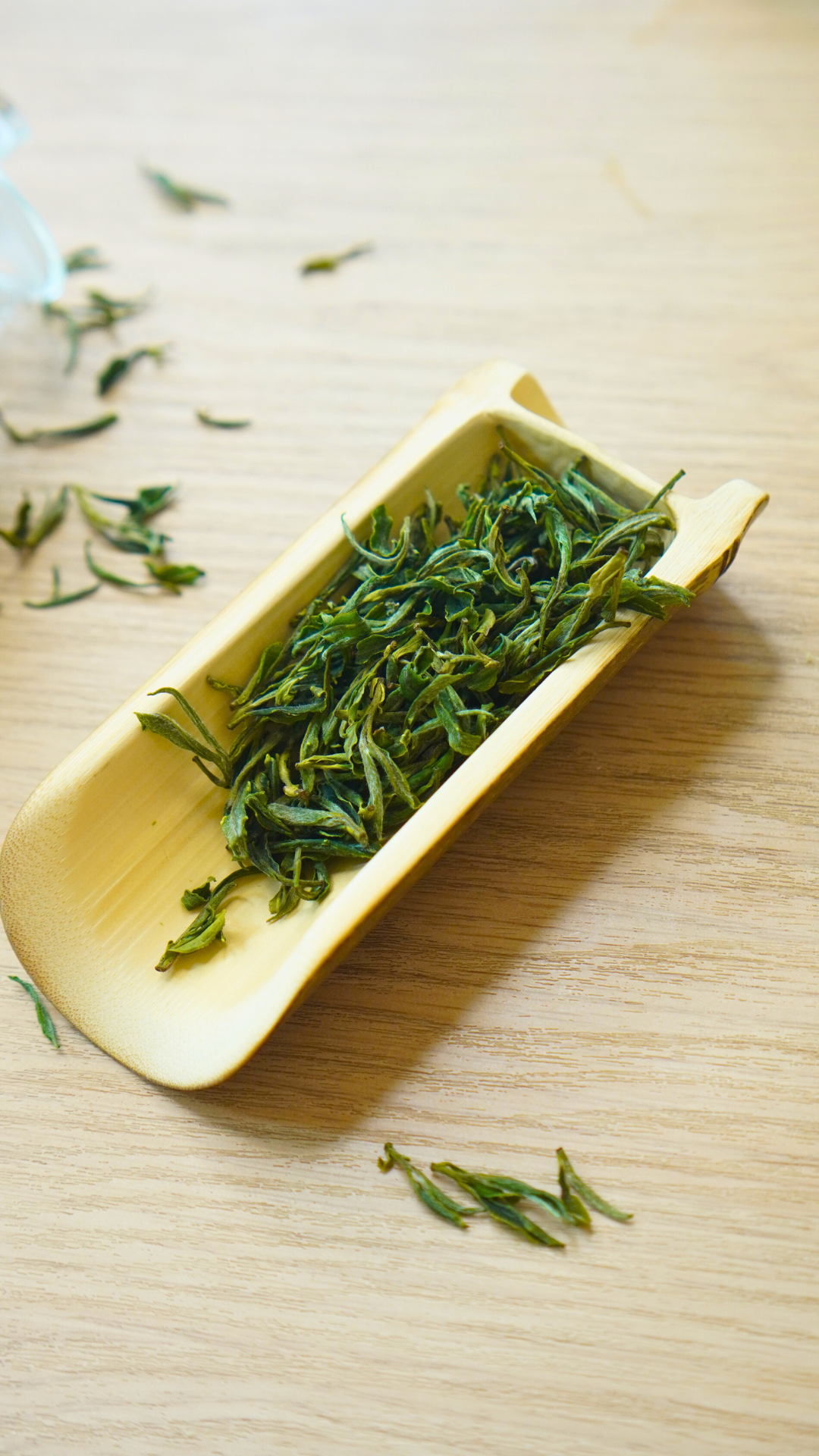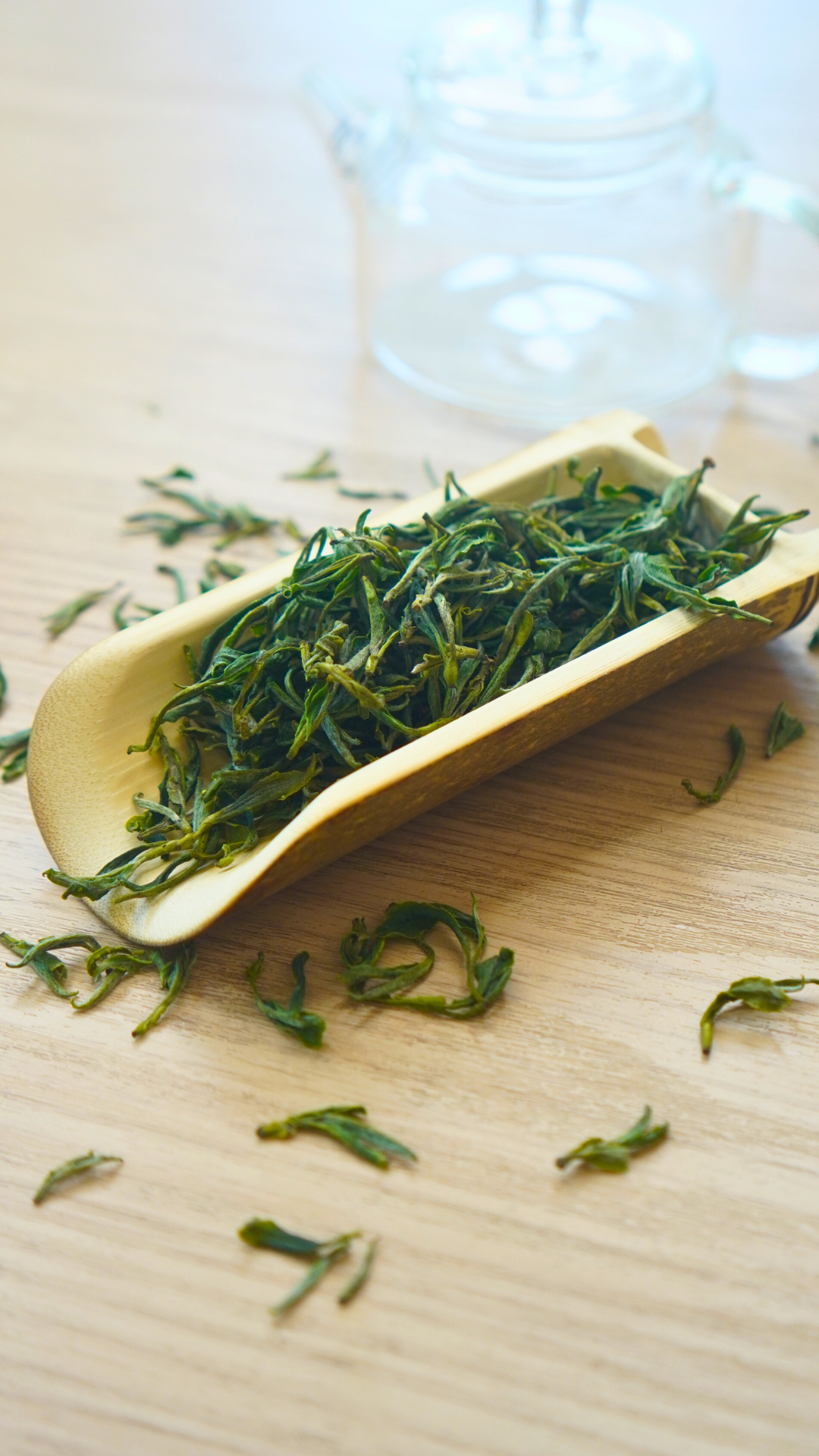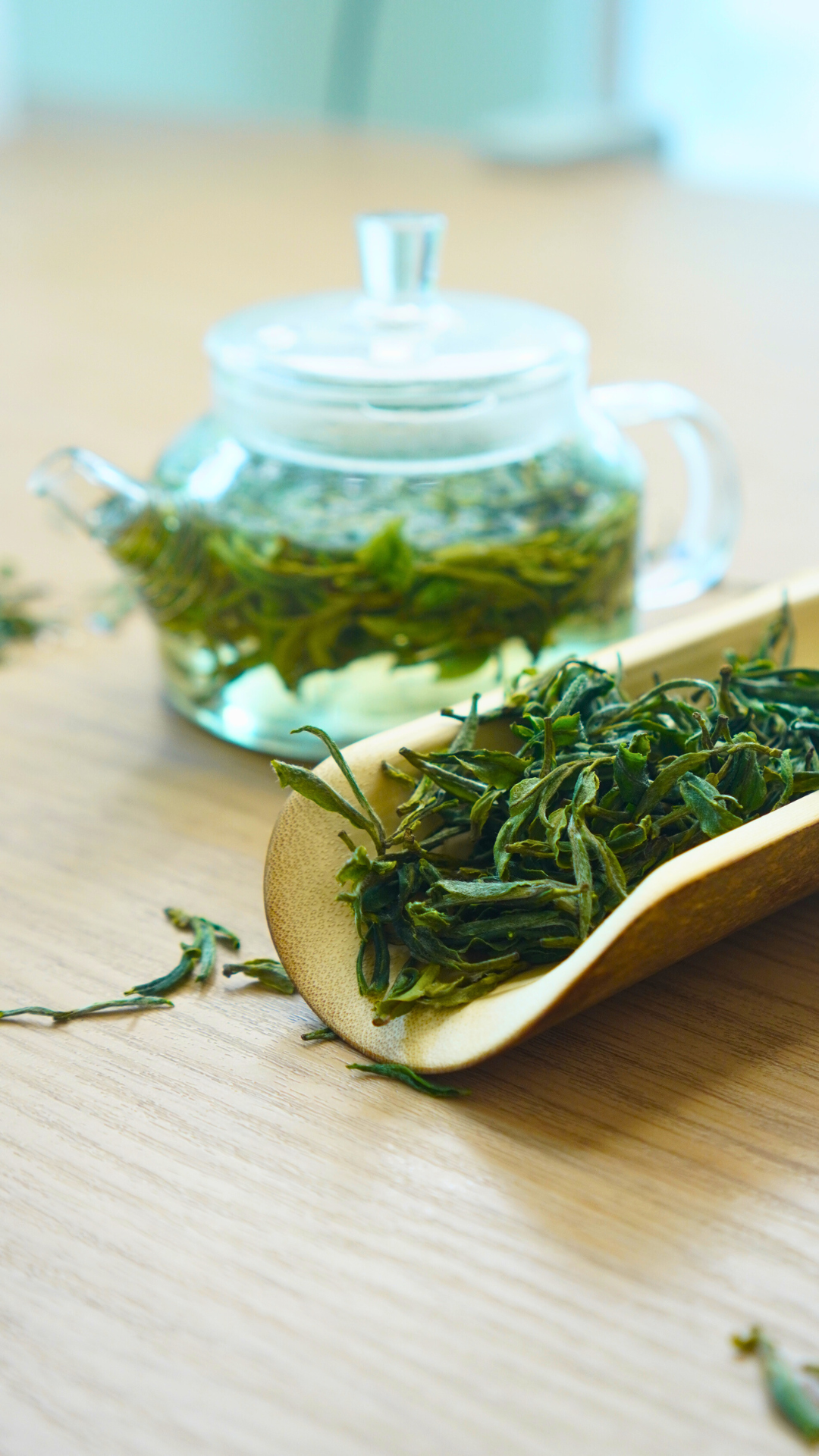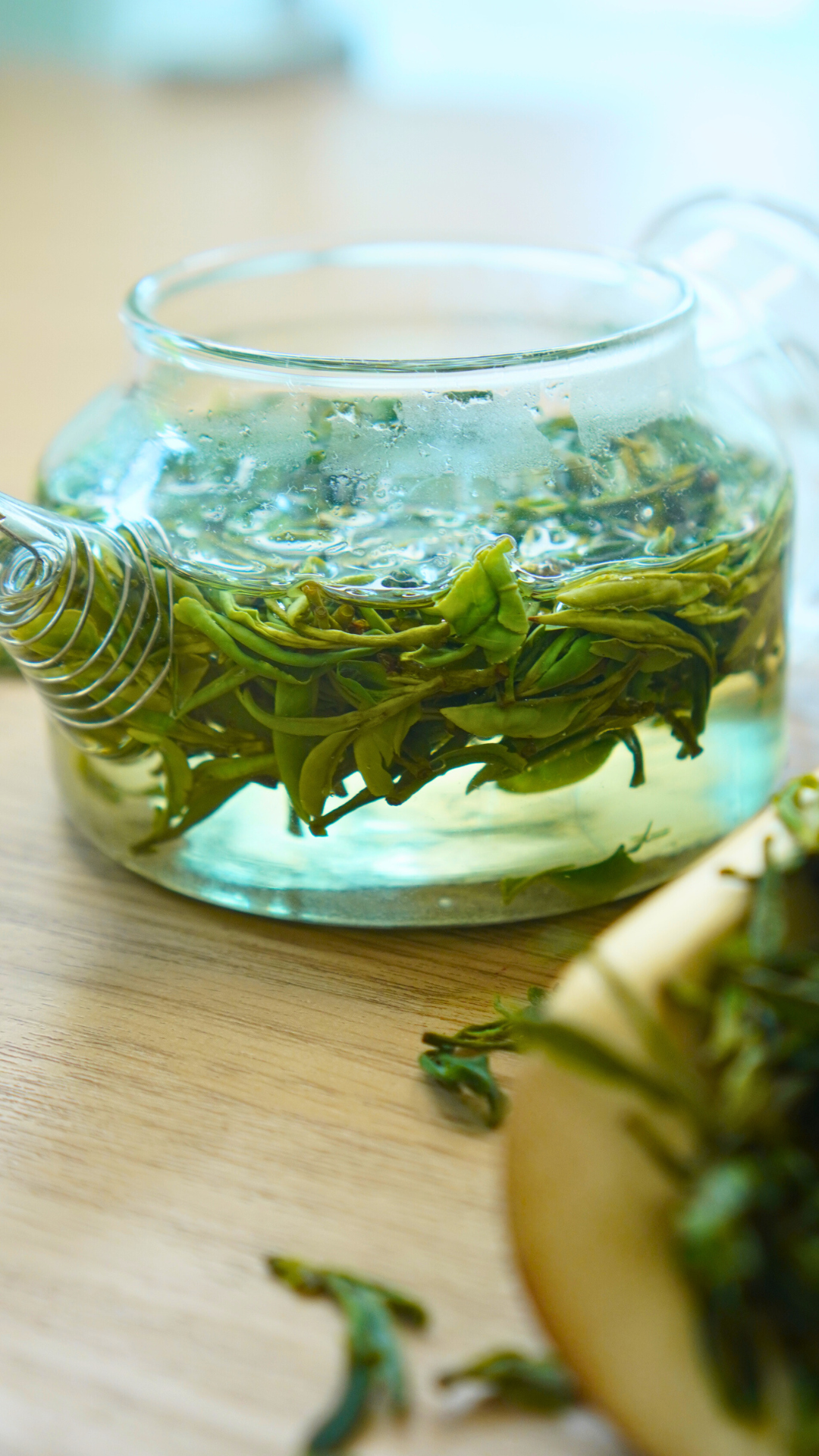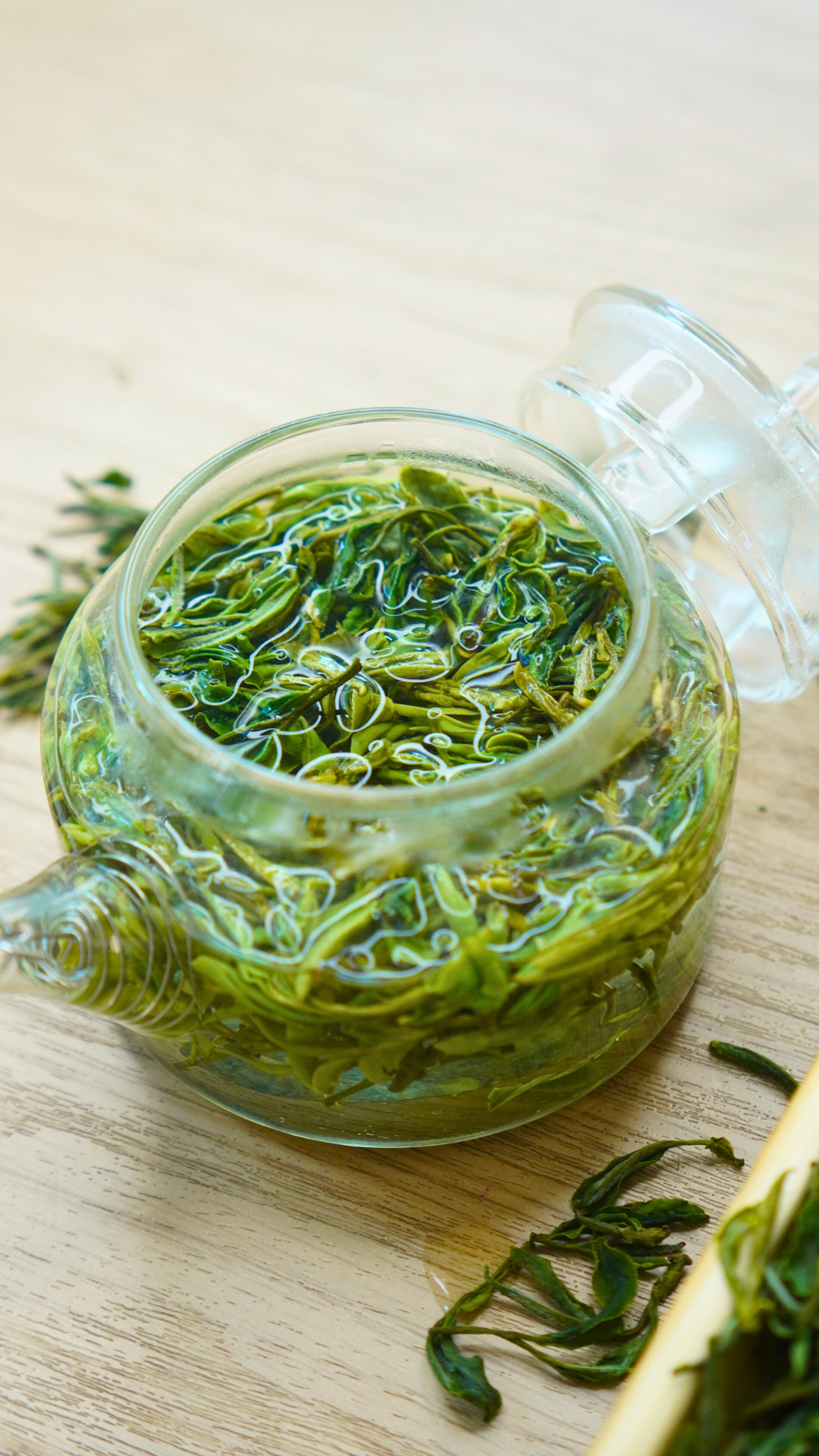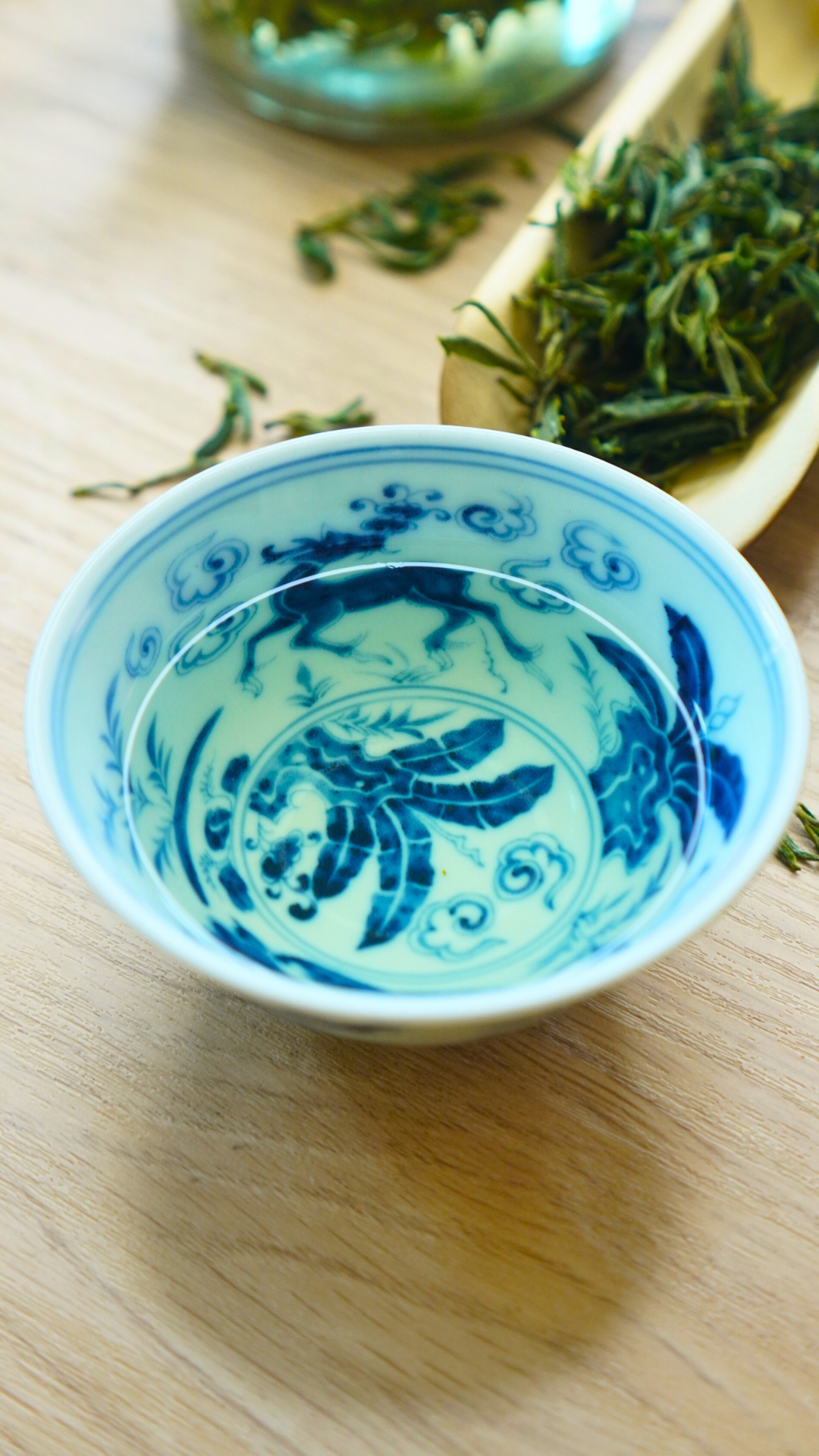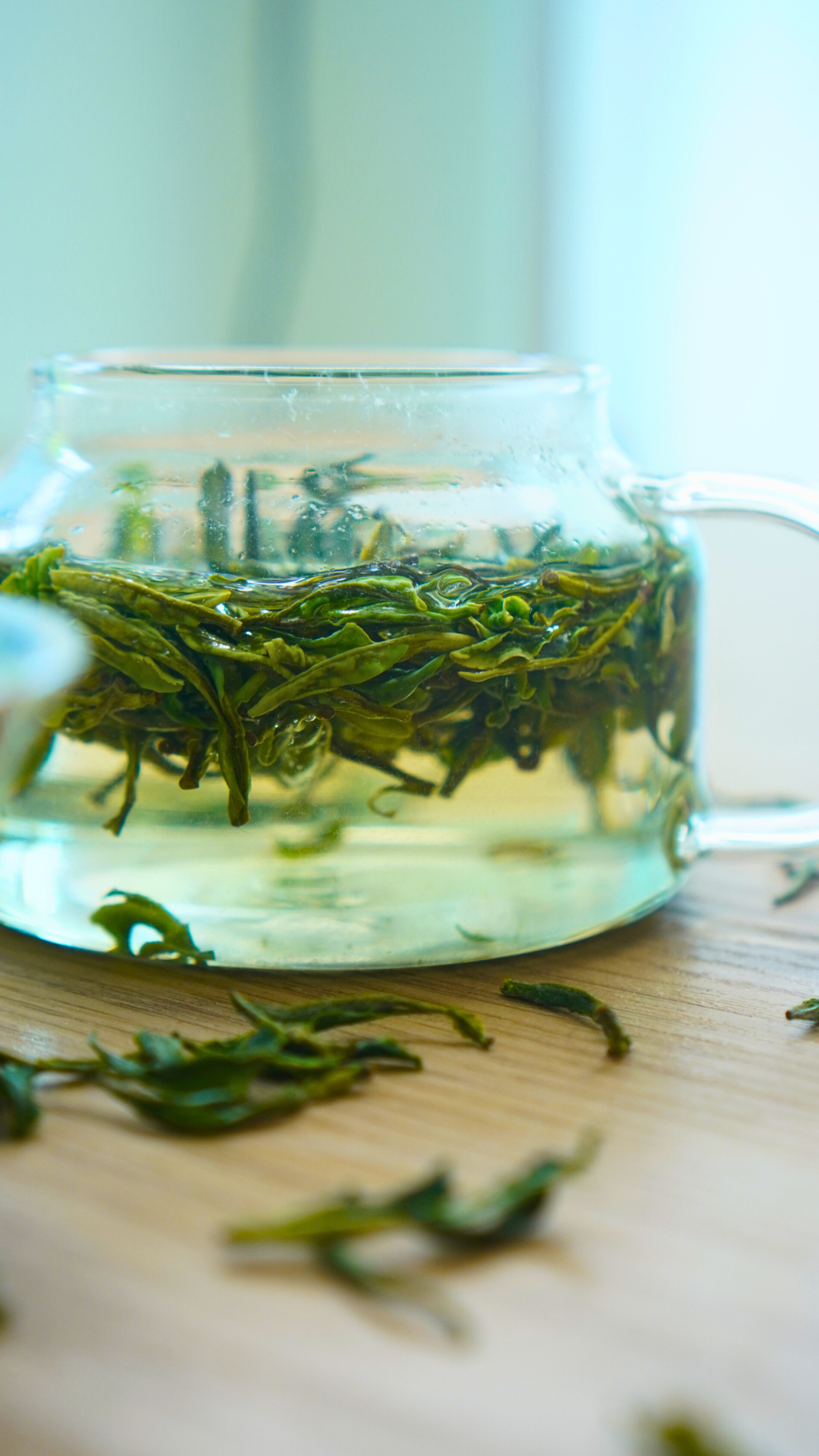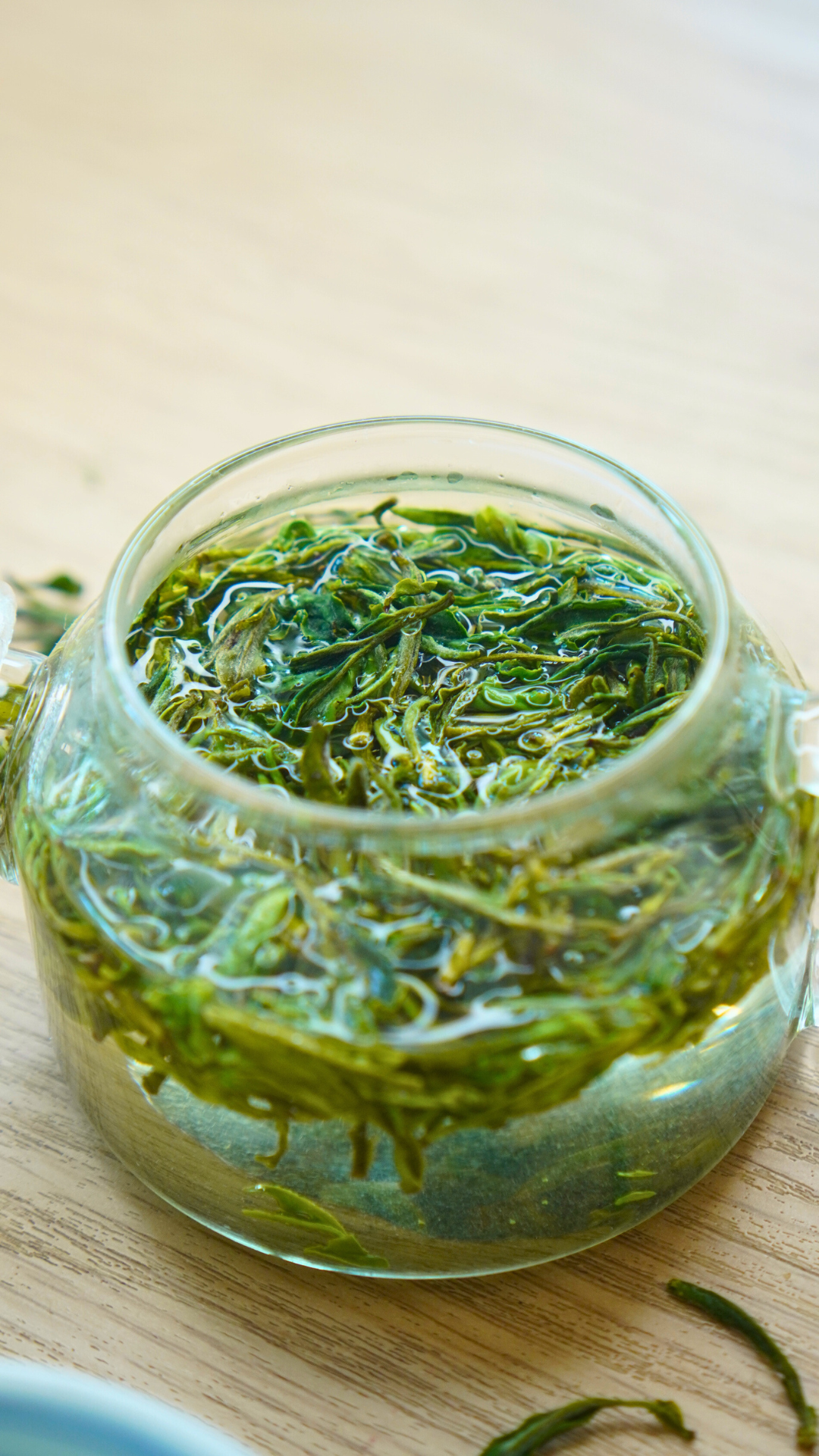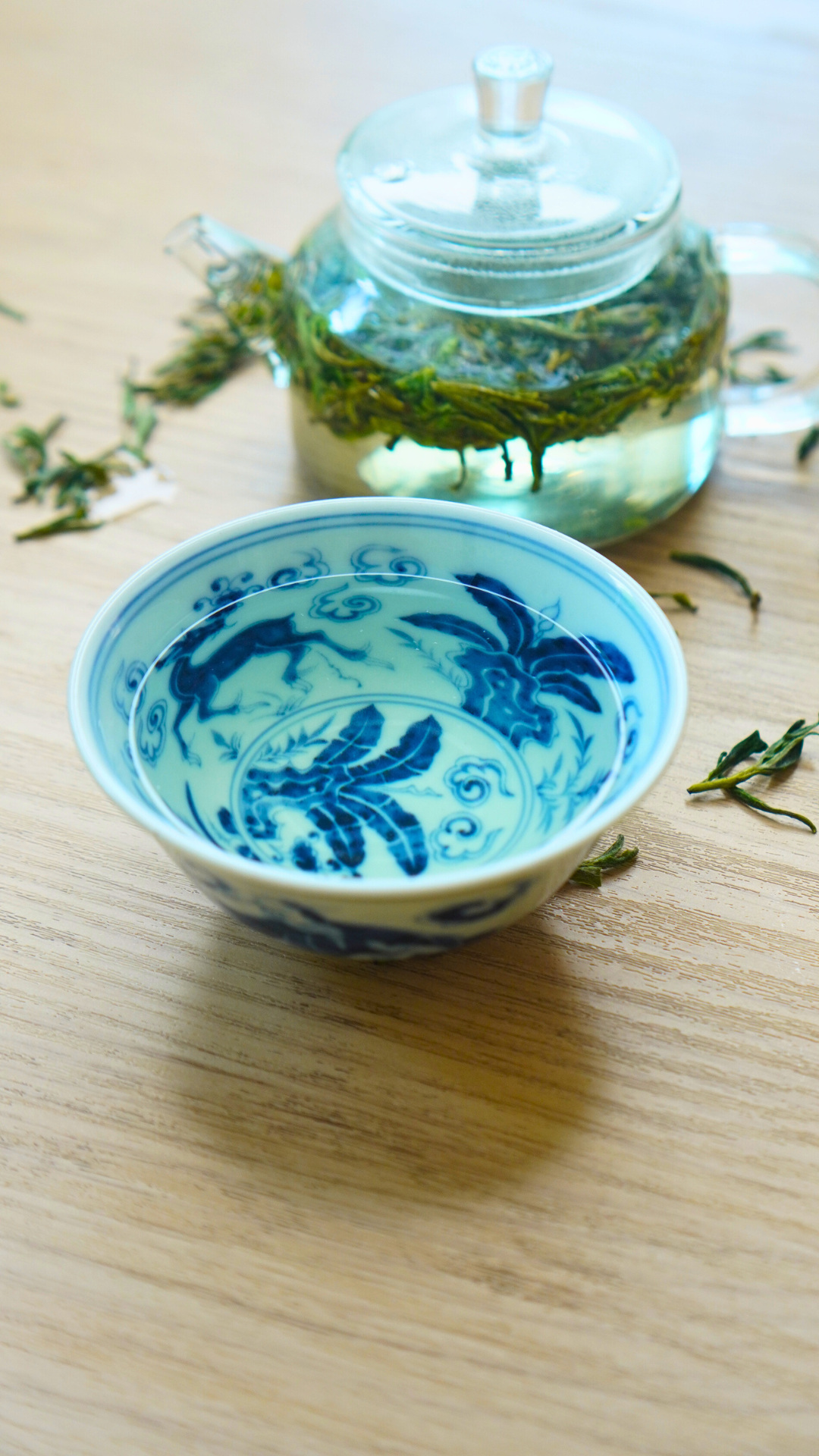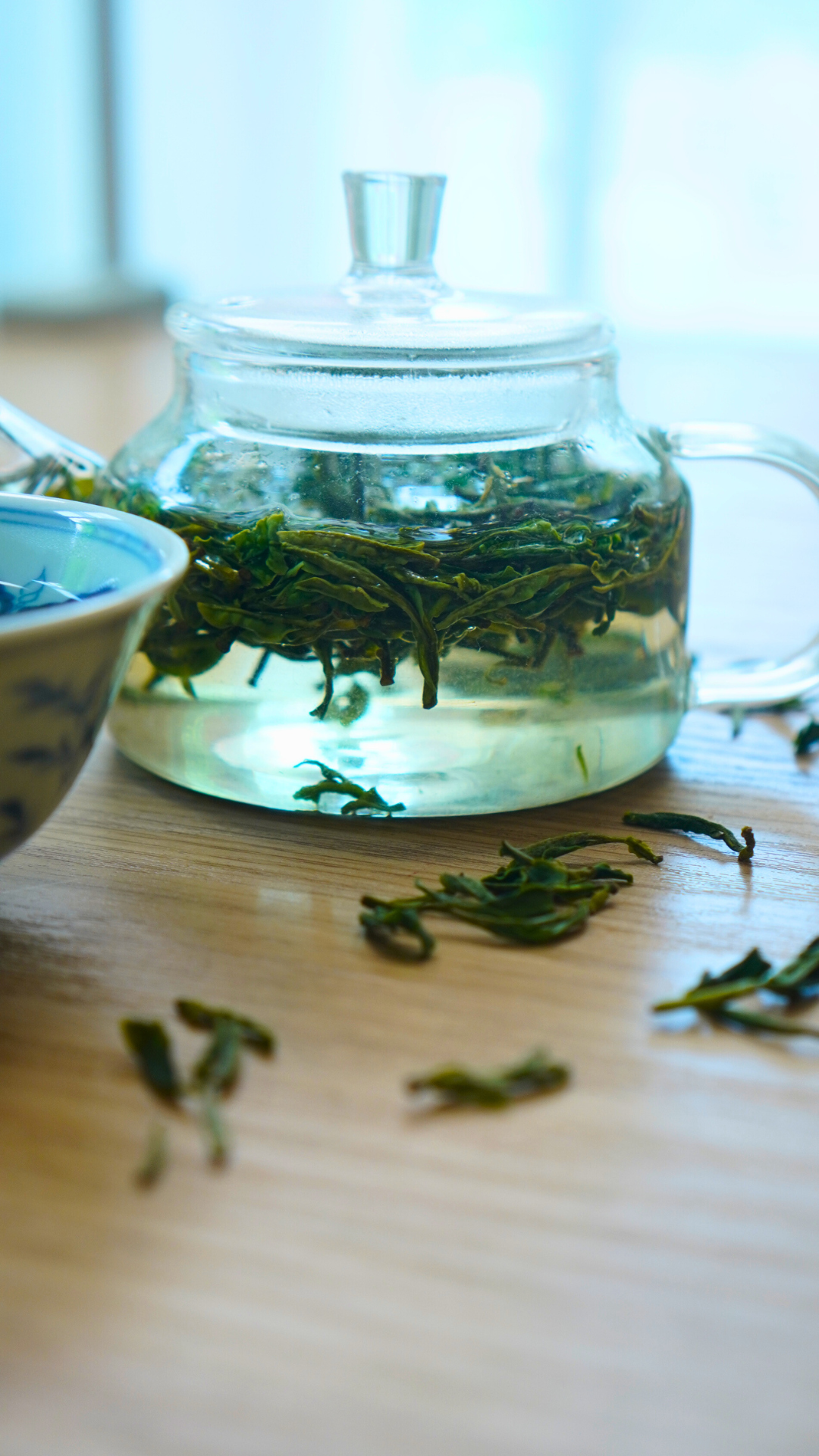🌱Organic Hand-Rolled Maofeng
🌱Organic Hand-Rolled Maofeng
有机手捻毛峰
Delicately handcrafted in the mountains of Huangshan, China
Grown at 800 meters above sea level in the certified organic tea gardens of Ruoling Mountain(箬岭山), this exquisite green tea reflects the pure essence of nature and tradition. Each leaf is hand-rolled with care by experienced tea artisans, preserving its natural shape, vibrant green color, and distinctive character.
Upon brewing, the tea releases a soft orchid aroma and yields a clear yellow-green infusion. The taste is fresh, clean, and lightly floral — a beautifully balanced cup that refreshes the senses and calms the mind.
Perfect for those who appreciate the subtle elegance of high-mountain teas and seek an authentic, organic tea experience — straight from the heart of China’s legendary Huangshan region.
Picking and Processing
Picking and Processing
Sourced from the pristine high-altitude tea gardens of Ruoling Mountain, 800 meters above sea level in Huangshan, Anhui, this Maofeng green tea is cultivated in a certified organic tea protection zone. Carefully hand-rolled by skilled artisans
Brewing
Brewing
For brewing, you can use the method typically used for oolong tea, adding 5 to 7 grams of tea into a Gaiwan. Increase the water temperature to 95 degrees Celsius, and steep for 5 to 10 seconds per infusion. It can be steeped about seven times.
Green Tea Storage
Green Tea Storage
It's recommended to store about 50g of green tea in sealed bags in a cool, dark cabinet or drawer for daily use. If room temperature is high, refrigerate at 0-5°C. Store remaining tea sealed in the freezer. This way, green tea can maintain its flavor for up to 2 years.
First, high temperature is the biggest concern in storage. For tea leaves, especially green tea, temperature is the most crucial factor to monitor. This is mainly because high temperatures accelerate the degradation of chlorophyll in green tea, continuously converting it into pheophytin, causing the color to turn dark brown. Research shows that for every 10°C increase in temperature, the rate of browning accelerates 3-5 times, and tea leaves easily become stale. Additionally, high temperatures intensify the auto-oxidation of tea polyphenols, dramatically reducing their content and thereby decreasing the tea's value.
Second, light exposure is another factor to avoid when storing green tea. Especially during summer and autumn when light is much stronger than in other seasons, improper storage can cause plant pigments and lipids in green tea to undergo chemical reactions, producing various off-flavors and resulting in a sun-damaged taste.
Third, foreign odors must be avoided. Particularly in summer and autumn when temperatures are generally higher, items tend to emit strong odors during storage, and green tea easily absorbs these odors, leading to deterioration. Therefore, isolation from foreign odors is essential during storage.
Finally, oxygen is the root cause of off-flavors in almost all stored items. This is because oxygen can catalyze or play a crucial role in many chemical reactions. Tea polyphenols in green tea are strong antioxidants, making them highly susceptible to oxidation. After oxidation, the brewed tea turns deep yellow and loses its fresh green tea aroma.
Common Storage Methods for Green Tea
1. Plastic Bag and Aluminum Foil Storage Method: Choose food-grade plastic bags with seals, preferably those with high density and good material quality. Avoid using scented or recycled plastic bags. After placing tea in the bag, squeeze out as much air as possible. Using a second plastic bag in reverse direction is even better. Clear plastic bags should avoid sunlight exposure. Aluminum foil bags work on similar principles. Additionally, divide purchased tea into separate sealed bags, store them in the refrigerator, and brew in batches to minimize air exposure after opening, thus slowing quality deterioration.
2. Metal Container Storage Method: Choose iron, stainless steel, or dense tin containers. For new containers or those previously used for other items with residual odors, place some tea powder inside, close the lid, shake in all directions to wipe the inner walls, then discard to remove odors. Double-lidded stainless steel tea containers available in the market are convenient and practical. Using clean, odorless plastic bags inside metal containers with tape-sealed lids is even better. Metal containers with tea should be kept in cool, shaded places away from direct sunlight, odors, moisture, and heat sources. This prevents rust and slows tea aging and deterioration. Tin containers are particularly effective at preventing moisture, oxidation, light exposure, and odor absorption.
3. Low-Temperature Storage Method: Maintain tea storage environment below 5°C using refrigeration or freezer storage. Note that for storage periods under six months, refrigeration at 0-5°C is most economical and effective; for periods over six months, freezer storage (-10 to -18°C) is better. Tea should be properly packaged and completely sealed to prevent odor absorption. When purchasing large quantities, divide into small packages (containers) before refrigeration/freezing, and remove only the amount needed for brewing. Avoid repeatedly freezing and thawing the same package.
- Loose Green Tea
- 500g/pouch
- Free Shipping
Couldn't load pickup availability











